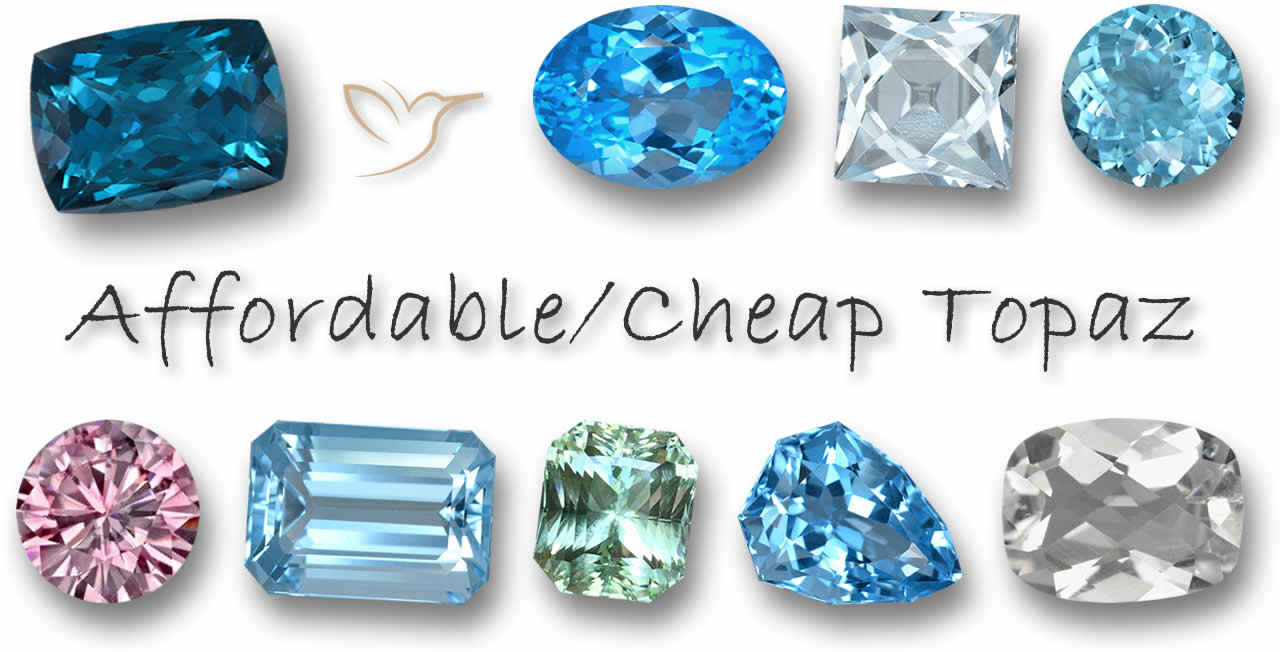Why Is Topaz So Cheap?

Introduction
Topaz stands out for its vibrant colors and flexibility, drawing in gem enthusiasts and jewelry creators. Unlike pricier options like sapphires or rubies, topaz tends to be easier on the wallet. You might wonder what keeps its price so reasonable - let's explore the key reasons behind this. Explore detailed information on topaz gemstones properties and history
The Abundance of Topaz
A big factor in topaz's low cost is how common it is. Compared to scarcer gemstones, topaz shows up in larger quantities in nature, simplifying mining and distribution. Major sources include Brazil, Russia, and various spots in Africa, ensuring a consistent supply that helps hold prices down.
Treatments and Enhancements
Topaz frequently undergoes treatments to boost its color and clarity, making it more eye-catching for buyers. Techniques like irradiation combined with heating create those striking blue shades and others. These processes cut costs by turning ordinary clear topaz into something far more desirable and ready for sale.
Market Demand and Consumer Perception
Gemstone prices hinge on how people view them and how much they're wanted. Topaz doesn't carry the same rich backstory or cultural weight as diamonds or sapphires. This milder interest keeps demand - and thus prices - in check. Plus, with treated versions everywhere, it misses out on the rarity factor that spikes values elsewhere.
The Varieties of Topaz and Their Impact on Price
Topaz appears in numerous colors, from the widespread and budget-friendly blue to the scarcer Imperial topaz with its golden-orange to pink tones. Everyday types stay cheap thanks to plentiful supplies and effective enhancements, while uncommon ones like Imperial or pink topaz fetch more due to their natural scarcity and appeal. Discover the current market value of topaz gemstones today

Topaz in the Jewelry Market
Within jewelry, topaz fits into everything from luxury items to everyday pieces. Its toughness suits rings, necklaces, and more, boosting its use. Yet, its abundance and simple enhancements often place it in affordable lines, which can shape views of it as a more modest gem. Review this detailed topaz buying guide for purchasers
Technological Advances in Gemstone Treatments
Progress in treatment methods has streamlined and cheapened the process of improving topaz's look. This leads to a market full of appealing stones at low prices, pushing overall costs even lower.
Quality and Grading
Topaz gets evaluated on color, clarity, cut, and carat, just like other gems. Even top-tier examples stay reasonably priced, though. This makes high-quality topaz accessible to many, solidifying its role as a favored yet economical choice.
Conclusion
In summary, topaz's budget-friendly nature stems from its plentiful supply, successful enhancements, and softer demand relative to elite gems. Still, it offers plenty of beauty and strength for those wanting quality without breaking the bank.
Frequently Asked Questions
What factors make topaz affordable?
Topaz's low price comes from its abundance in nature, common treatments that enhance its appearance, and lower demand compared to gems like diamonds or sapphires.
Why is topaz often treated?
Treatments like irradiation and heating improve color and clarity, turning basic topaz into more marketable stones at a reduced cost.
What are the different varieties of topaz?
Topaz ranges from common blue types to rarer ones like Imperial (golden-orange to pink) and pink topaz, with the uncommon varieties costing more due to scarcity.
How does topaz compare in hardness to other gems?
Topaz is quite durable, making it suitable for jewelry, though it doesn't command the same high prices as harder-to-find stones.
Where is topaz mainly sourced from?
Major deposits are in Brazil, Russia, and several African nations, contributing to its steady availability and lower market value.

